- Home
- Samuel Beckett
Disjecta: Miscellaneous Writings and a Dramatic Fragment
Disjecta: Miscellaneous Writings and a Dramatic Fragment Read online
DISJECTA
Miscellaneous Writings and a Dramatic Fragment
by
Samuel Beckett
Edited with a foreword by Ruby Cobn
Copyright © 1984 by Grove Press, Inc.
All rights reserved. No part of this book may be reproduced in any form or by any electronic or mechanical means, including information storage and retrieval systems, without permission in writing from the publisher, except by a reviewer, who may quote brief passages in a review. Scanning, uploading, and electronic distribution of this book or the facilitation of such without the permission of the publisher is prohibited. Please purchase only authorized electronic editions, and do not participate in or encourage electronic piracy of copyrighted materials. Your support of the author’s rights is appreciated. Any member of educational institutions wishing to photocopy part or all of the work for classroom use, or anthology, should send inquiries to Grove/Atlantic, Inc., 841 Broadway, New York, NY 10003 or [email protected].
Library of Congress Catalog Card Number: 83-48309
eBook ISBN-13: 978-0-8021-9842-6
Printed in the United States of America
Grove Press
an imprint of Grove/Atlantic, Inc.
841 Broadway
New York, NY 10003
Distributed by Publisher’s Group West
www.groveatlantic.com
CONTENTS
Editor’s Foreword
Part I: Essays at Esthetics
1. Dante … Bruno . Vico … Joyce
2. Le Concentrisme
3. Excerpts from Dream of Fair to Middling Women
4. German Letter of 1937
5. Les Deux Besoins
Part II: Words about Writers
A. Other Writers
1. Moerike on Mozart
2. Feuillerat on Proust
3. Leishmann’s Rilke translation
4. Thomas McGreevy
5. Recent Irish Poetry
6. Ezra Pound
7. Papini on Dante
8. Sean O’Casey
9. Censorship in the Saorstat
10. Jack B. Yeats
11. Denis Devlin
12. McGreevy on Jack B. Yeats
B. Self
1. The Possessed
2. On Murphy (to McGreevy)
3. On Murphy (to Reavey)
4. On Works to 1951
5. On Endgame
6. On Play
7. On Murphy (to Sighle Kennedy)
8. Program note for Endgame
Part III: Words about Painters
1. Geer van Velde
2. La Peinture des van Velde
3. Peintres de l’Empechement
4. Three Dialogues
5. Henri Hayden Homme-Peintre
6. Hommage à Jack B. Yeats
7. Henri Hayden
8. Bram van Velde
9. Pour Avigdor Arikha
Part IV: Human Wishes
Notes
Foreword
Disjecta is Beckett’s own title for this miscellany of criticism and a dramatic fragment. Unpublished or published obscurely, these pieces have been available only in a few fortunate libraries. It is in generosity to scholars—on the special plea of Dr James Acheson — that Samuel Beckett now permits the publication of material which he belittles as mere products of friendly obligation or economic need. Since the volume is compiled for scholars who read several languages, Beckett stipulates that these ‘bits and pieces’ be printed in the language of composition.
Like other scholars familiar with Beckett’s criticism, I value it more than its author does. Like other scholars, too, I believe that the miscellany harbors an esthetic, but Beckett’s criticism nevertheless resists a Procrustean coherence. Beckett himself observes (on Feuillerat’s ‘ordering’ of Proust): ‘… a beautiful unity of tone and treatment would have, as it were, embalmed the whole’. To avoid embalming the whole, we should savor Beckett’s morsels in all their variety.
Although Beckett does not swerve from commitment to an art of questions, hesitations, explorations — its theory and practice — his expression erupts in provocative articles, disdainful reviews, reflective essays, searching letters, and rare lyrical homage. To invite continuous reading, I have grouped the material by subject: 1) more or less formal esthetics, 2) literary criticism, 3) art criticism. By way of introduction, however, I prefer to move in stricter chronology: 1) Beckett’s early mannered but nevertheless discerning perceptions; 2) commissions for periodical publication; 3) explicit exploration of the artist’s calling; 4) postwar art criticism; 5) published commentary on his own work.
* * *
1) The Young Scholar
Today we are not surprised that Beckett was drawn to two modern giants, Joyce and Proust, but they did not tower so high in the late 1920s, and Beckett’s essays were lucky assignments. In 1928, when he left Dublin as an exchange student to Paris, Beckett met a Joyce who was anxious to publicize Work in Progress by a volume of laudatory essays. Since Beckett had studied Italian, and particularly Dante, at Trinity College, Joyce proposed that the 22-year old student trace Work’s debt to the Italian trinity of Dante, Bruno, and Vico. Obligingly, Beckett read Vico’s Scienza Nuova, which he then analyzed so acutely that, decades later, he is cited in Vico bibliographies. More strikingly original are the parallels Beckett draws between Dante and Joyce — unlikely to be cited in Dante bibliographies.
Of particular relevance in the context of this volume is Beckett’s much quoted declaration: ‘Literary criticism is not book-keeping’, and he proceeds to prove that Samuel Beckett’s literary criticism is closer to dart-shooting (against Benedetto Croce on Vico and against all philistines on Joyce). But Beckett could also register admiration, and he praises Vico’s concern with myth, language, and poetry in his ‘new science’. Although Beckett dutifully points to the importance of Viconian structure in Work in Progress, his primary enthusiasm is language as form and content. And it is by language that Beckett yokes Joyce to Dante, for he contends that they both invented a distinctive ideolect, spoken by no one. However, Beckett closes Dante … Bruno. Vico … Joyce on metaphysics rather than language, and on contrast rather than resemblance. Unlike Dante, Beckett’s Joyce views this earth as Purgatory, and any two opposing principles can make the purgatorial world go round. Beckett’s Joyce thus erects an esthetic structure on the ancient framework of religious ethics. The new closed system is amoral and arbitrary.
Young Beckett’s rapport with Proust was less personal and more profound. Dead in 1922, when Beckett was 16, Proust was little read at the beginning of the socially conscious 1930s. Beckett himself had only dipped into Proust before receiving a contract from an English publisher. After two Paris years as lecteur at the prestigious Ecole Normale Supérieure — two years spent in a more Bohemian than academic fashion — Beckett devoted the summer of 1930 to careful perusal of A la recherche du temps perdu. His detailed analysis of themes and texture still serves the Proust tyro, and his translations of key passages improve on the Scott Moncrieff version of 1922. Although Beckett dislikes the monograph and will not permit its translation into French, Proust was a modest success, both critically and commercially.
Subduing the polemical tone of the Joyce essay, the budding scholar refers in Proust to such tried and true critical pigeonholes as Romanticism, Symbolism, Relativism, Impressionism — all resistant to Realism, the dominant mode of the period. Beckett never explicitly compares Proust to Joyce, but he approves of both writers for fusing form and content. The admiring Joyce disciple assumes critical distance from Proust who is
called ‘the garrulous old dowager of the letters’ who can repeat himself ‘ad nauseam’. As the monograph proceeds, however, Beckett’s appreciation grows for an author with whom he shares fundamental tenets — ‘primacy of instinctive perception’, style as vision more than technique, ‘an art that is perfectly intelligible and perfectly inexplicable’. It is, however, a minor note in Proust that will become Becktt’s major critical chord — the mobile subject before an evanescent object.
Less than half the Joyce essay focuses on Joyce, but the whole Proust monograph is centered on Proust. Beckett’s erudition is less obstreperous — proper names, artistic movements, untranslated Spanish and Italian. Many pages look as though the paragraph had never been invented. Proust has been called portentous, but the prose can be defended as Beckett himself defended Proust: ‘The complaint that it is an involved style, full of periphrasis, obscure and impossible to follow, has no foundation whatsoever.’ Beckett respects academic form by occasional footnotes, but he refers to no earlier Proust critics, and he throws unscholarly darts at such contemporaries as Cocteau, France, Gide. Beckett’s Proust nevertheless fits the academic mould more snugly than he himself could do, once he returned to Dublin to teach at Trinity College.
It was probably at this time that he played a trick on the Moden Language Society of Dublin — the kind of trick that Parisians would recognize as a canular normalien. To a learned society, Beckett read — in French — a learned paper on a Toulouse author Jean du Chas, founder of Concentrism. Chas and his Concentrism, however, were pure fiction, having been invented by Beckett to mock pedantry, elsewhere called ‘loutishness of learning’.
Beckett resigned from Trinity at the end of 1931, terminating his brief academic career. For years afterwards — until the unexpected success of Waiting for Godot — he was an author who did not earn sufficient income to sustain him. In 1932, back in Paris, he began his first novel Dream of Fair to Middling Woman, even while doubting the viability of the novel form. Esthetics therefore infiltrate the picaresque account of the amatory adventures of his protagonist Belacqua. Beckett’s anonymous narrator fabricates a cbinoiserie that attempts to confine fiction in a closed system, only to find that his characters refuse enclosure. Most recalcitrant is Belacqua, himself a wouldbe writer who espouses silence. Belacqua meditates on the book he would like to write, comparing it to Beethoven’s music with its ‘punctuation of dehiscence’. Belacqua forecasts Beckett’s Trilogy in his fantasy of a rigorously structured book that looks improvised. Dream itself is the obverse — innocent of structure but guilty of mannered prose.
In the same year as Dream, 1932, Beckett signed a manifesto published in transition — ‘Poetry is Vertical’ — but he had no part of its composition.
2) The Journalist
Beckett revised the adventures of Belacqua into a series of stories which were published in 1934 in London as More Prick Than Kicks. On the strength of this achievement and with the help of friends, he hoped to earn money in literary journalism. His few reviews are corrosive, pouring scorn on a Mozart biographer, an academic Proustian, a translator of Rilke, a Catholic interpreter of Dante, and almost all contemporary Irish poets. (His most withering piece — on Irish censorship — languished unpublished.) Beckett’s rare praise is reserved for the ‘knockabouts’ of Sean O’Casey, die ‘Spartan maieutics’ of Ezra Pound, and the (unremarkable) verse of his Irish friends Brian Coffey, Denis Devlin, and Thomas McGreevy.
Miscellaneous pieces though they are, the reviews are similar in assurance, erudition, and lucidity — a continuation of the Proust tone. The longest review ‘Recent Irish Poetry’ expands on the Proust motif of instability of subject and object. Beckett divides contemporary Irish poets into ‘antiquarians’ and those who are aware of a ‘rupture of the lines of communication’ because of the breakdown of subject and/or object. He cites no Irish poet with such awareness; instead, he praises an Irish painter, Jack Yeats, and an Anglo-American poet, T.S. Eliot.
By the mid-1930s Beckett abandoned literary journalism for creation. In 1935 his collection of verse Echo’s Bones appeared in Paris. By 1936 he had completed Murphy, his most traditional novel, but it was still unpublished when he returned from London to Dublin, where he reviewed a book by the painter Jack Yeats. Beckett hails Yeats’ Amarantbers for its discontinuities and its lack of those staples of fiction — reportage, allegory, symbol, and satire. In celebrating the imagination, Yeats traces a development that Beckett himself will later claim: ‘You begin to stop emptying your heads, every time they begin to fill with thoughts, and then you will begin to think, and then you will stop thinking and begin to talk. … And then you will stop talking and begin to fancy, and then you will stop fancying and begin to imagine.’
3) The Esthetic Explorer
For a time Beckett put aside his own art to ponder its direction. Uniquely explicit, a letter of 1937 reveals more of his artistic credo than any other critical document. To a German acquaintance who had asked him to translate some verse, Beckett expressed a desire for ‘a literature of the unword’. Condemning language as a ‘veil that must be torn apart in order to get at the things (or the Nothingness) behind it’, Beckett castigates literature for lagging behind the other arts that critically appraise their respective mediums. He yearns for silence to bore holes in language, and he contrasts this as yet unwritten literature with the Joycean ‘apotheosis of the word’. Gertrude Stein might be a more suitable guide, but she is ‘in love with her vehicle’. While waiting for his own vehicle, Beckett admits to amusing himself, as in this German letter, by inadvertently sinning against a foreign language as he hopes deliberately to sin against his own. Beckett’s German letter is thus a declaration of creation through decreation.
That same year, 1937, Beckett reviewed poems by his friend Denis Devlin, quoting copiously and praising fulsomely. Although the Devlin quotations do not support Beckett’s critical stance, that stance is firm: he sides with the self against society, the microcosm against the macrocosm, depth against surface, intuition against intellect. Moreover, art appears to him to be, through hesitation and interrogation, the expression of a need. The reviewer’s role is to testify to the nature of the need.
Within a year Beckett moved to Paris and wrote in French — verse and another major esthetic statement, ‘Les Deux besoins’. As though suddenly aware of the paradox of a ‘literature of the unword’, he groped toward the unword through a density of words. Thus, Beckett does not explicitly name the titular needs out of which the work of art is born, but he exalts art as the only path to knowledge about the self. The drive to such knowledge, a need, is countered by a need denying such knowledge, and out of their conflict/synthesis arises the work of art. In Lawrence Harvey’s fine summary, the artist is poised ‘in delicate balance between the need for privation and the need for fulfillment; and the synthesis of thesis and antithesis comes in the third condition, the need to make.’ Beckett summons geometry to situate the contemporary artist; the relation of side and hypotenuse of a triangle (already pondered in Murphy) is an irrational number, a metaphor for the artist’s ‘hell of irreason’. Despatching science, theology, and Cartesian dualism, Beckett envisages an art riddled with questions rather than sealed off in solutions. And the whole is phrased in question-provoking French. Beckett mirrors the difficulty of the thought or artefact in the difficulty of his critical essay — not without grace.
4) The Art Critic
When Beckett moved to Paris in 1938, he made friends with visual artists as well as writers — Giacometti, Hayter, the van Velde brothers, and, later in Roussillon, Hayden. Still uncertain of his income at the end of World War II, Beckett accepted two assignments in art criticism. Perhaps this venture was triggered by a last favor to his friend McGreevy, whose book on Jack Yeats was published during Beckett’s brief postwar visit to Dublin. Entitled ‘MacGreevy [sic] on Yeats’, the review is divided into three parts. First Beckett points out that McGreevy wrote his Yeats monograph in 1938 but could not fin
d a publisher, in spite of his critical competence. The rest of the essay sets ‘The National Painter’ against The Artist’. McGreevy’s view of Jack Yeats is subsumed under the first heading, Beckett’s under the second. Beckett summarizes McGreevy’s nationalist portrait of Jack Yeats, the more sharply to diverge from it.
Beckett’s artist is above local accident’ or ‘local substance’, and he groups Yeats with ‘the great of our time, Kandinsky and Klee, Ballmer and Bram van Velde, Rouault and Braque’ (craftily bracketing two unknowns by acknowledged celebrities). After sketching typical Yeats scenes, Beckett affirms that the artist reveals an invisible world through his ‘notations’. The last words of the review ascribe no more sense to an inward than an outward artistic search, and yet appreciation of an inner drive will seep into Beckett’s criticism and creation.
No sooner did Beckett leave Dublin for postwar France than he wrote (on commission) a long essay to coincide with exhibitions of painting by the virtually unknown van Velde brothers. That piece is unique in examining, almost dramatizing, the predicament of the non-professional art-lover, who is assaulted by the verbiage of art criticism. A third of Beckett’s article is over before he reaches the painting of the two Dutch brothers whose vision is similar but whose paintings contrast.
‘L’art adore les sauts’, Beckett announces late in the essay, and his criticism also adores leaps — from viewer to reviewer to painting personified, then back to the poor viewer to whom the piece is dedicated. After generalizing about the painting of the dissimilar brothers (but without naming a single painting), Beckett acclaims critical art i.e. an art that is critical of its objects, methods, goals, and criticism. He then leaps back to the van Veldes and their obsession with representing change. Another leap lands him on the ‘human’ and similar extra-esthetic criteria by which contemporary art has the misfortune to be judged. In that context the van Veldes would be stoned, or perhaps merely hooted down. Many stupid things will be written about these two artist brothers, Beckett predicts, and he declares it an honor to lead the list.

 More Pricks Than Kicks
More Pricks Than Kicks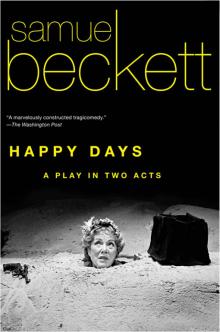 Happy Days
Happy Days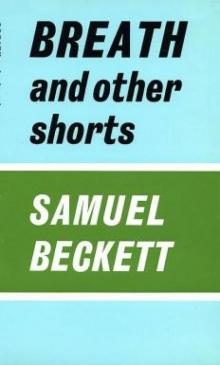 Breath, and Other Shorts
Breath, and Other Shorts Endgame & Act Without Words
Endgame & Act Without Words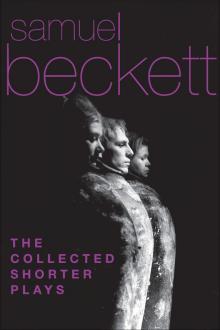 The Collected Shorter Plays of Samuel Beckett
The Collected Shorter Plays of Samuel Beckett The Complete Short Prose, 1929-1989
The Complete Short Prose, 1929-1989 Stories and Texts for Nothing
Stories and Texts for Nothing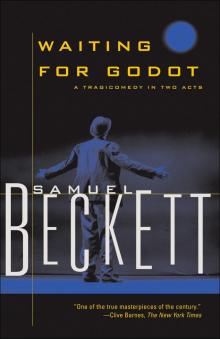 Waiting for Godot
Waiting for Godot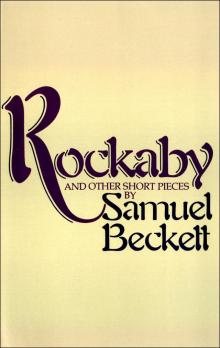 Rockaby and Other Short Pieces
Rockaby and Other Short Pieces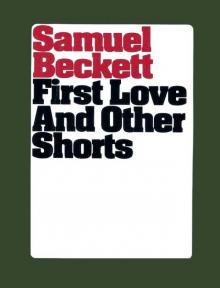 First Love and Other Shorts
First Love and Other Shorts How It Is
How It Is Disjecta: Miscellaneous Writings and a Dramatic Fragment
Disjecta: Miscellaneous Writings and a Dramatic Fragment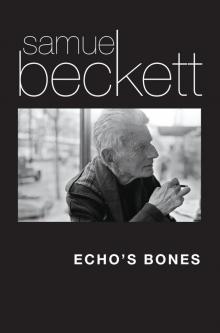 Echo's Bones
Echo's Bones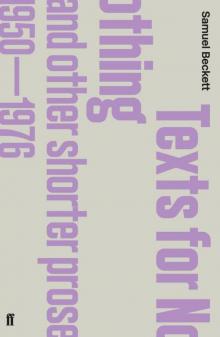 Texts for Nothing and Other Shorter Prose 1950-1976
Texts for Nothing and Other Shorter Prose 1950-1976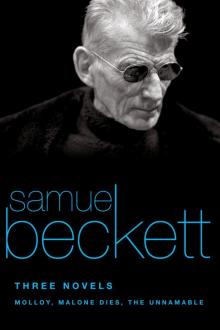 Three Novels
Three Novels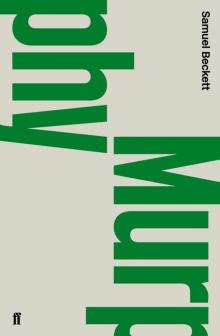 Murphy
Murphy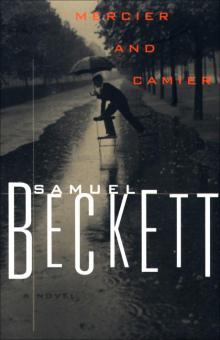 Mercier and Camier
Mercier and Camier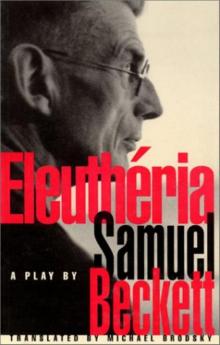 Eleuthéria
Eleuthéria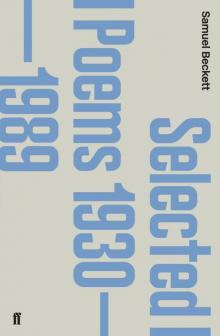 Selected Poems 1930-1988
Selected Poems 1930-1988 Dream of Fair to Middling Women
Dream of Fair to Middling Women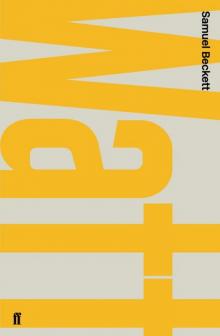 Watt
Watt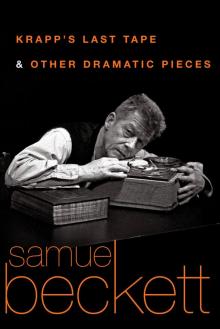 Krapp's Last Tape and Other Dramatic Pieces
Krapp's Last Tape and Other Dramatic Pieces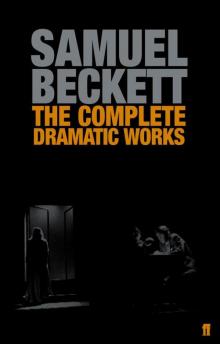 The Complete Dramatic Works of Samuel Beckett
The Complete Dramatic Works of Samuel Beckett Worstward Ho
Worstward Ho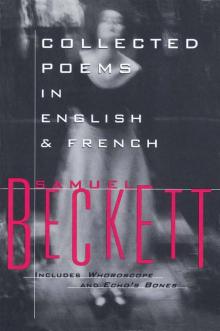 Collected Poems in English and French
Collected Poems in English and French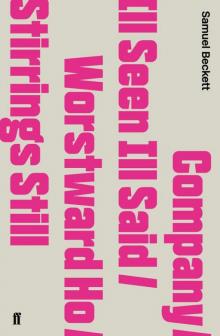 Company / Ill Seen Ill Said / Worstward Ho / Stirrings Still
Company / Ill Seen Ill Said / Worstward Ho / Stirrings Still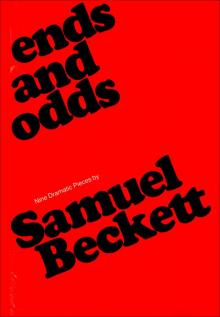 Ends and Odds
Ends and Odds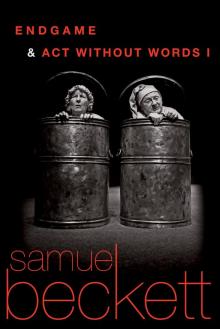 Endgame Act Without Words I
Endgame Act Without Words I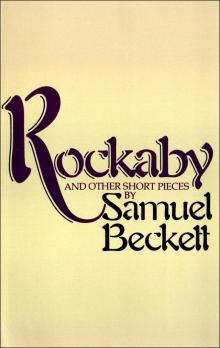 Rockabye and Other Short Pieces
Rockabye and Other Short Pieces The Collected Shorter Plays
The Collected Shorter Plays The Complete Dramatic Works
The Complete Dramatic Works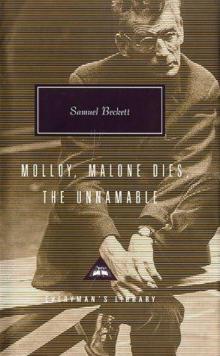 Three Novels: Malloy, Malone Dies, The Unnamable
Three Novels: Malloy, Malone Dies, The Unnamable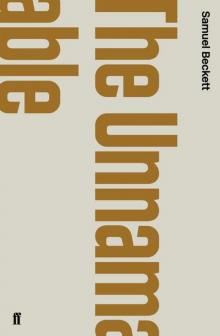 The Unnamable
The Unnamable